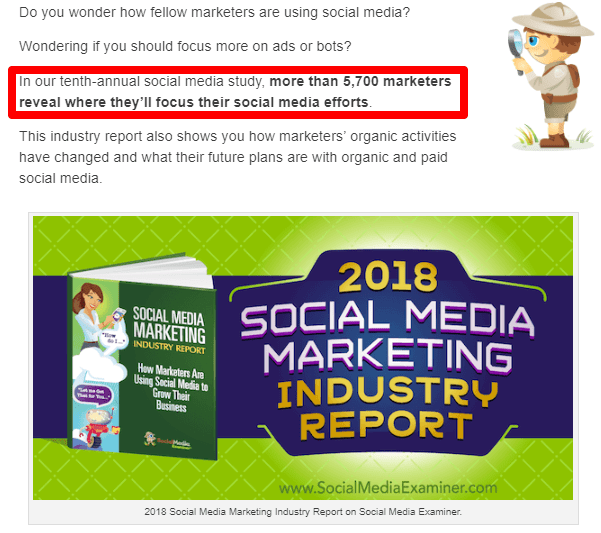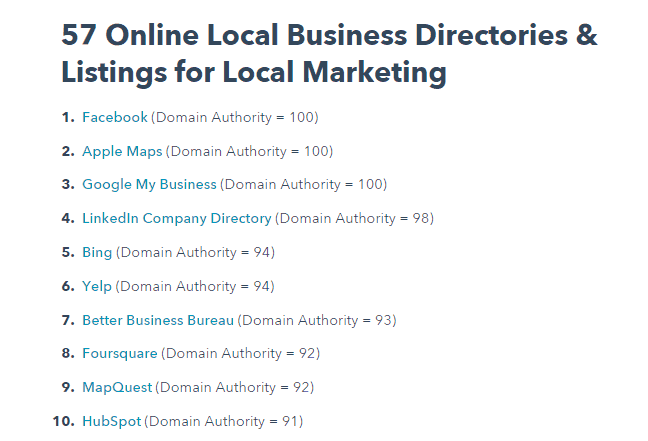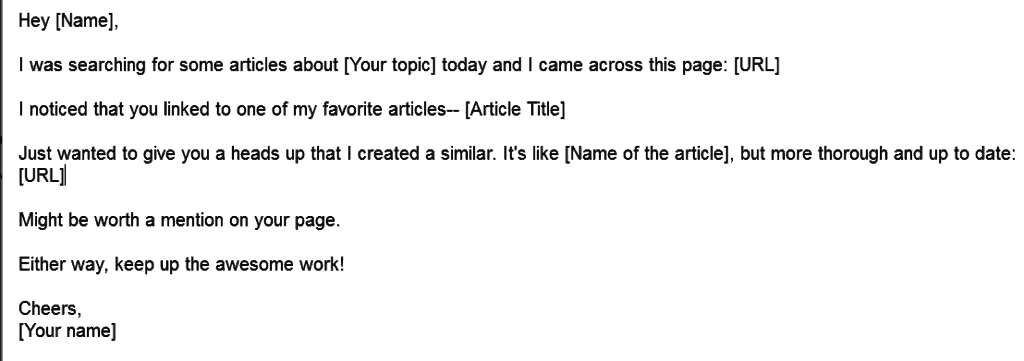There’s something most brands still don’t understand about backlinks…
Nowadays, you really have to earn them.
You think you can put out basic blog posts and embark on a link building campaign?
Nope.
For starters, you have to make sure your content is worthy of those all-important links.
Olga Smirnova at SEMRush says there are two core link building rules you should follow in a post-Penguin world:
- “Create valuable, quality content that is engaging and likely to be linked to.
- Get your content in front of the right people by distributing it through the right channels.”
If you want your content to bring in links, then it has to be strong.
It has to be extra.
Why would authority sites link to your content if it’s not beneficial to them or their readers?
(Naughty blackhat techniques aside).
You need a top-class portfolio of linkable assets to work with to catch ‘em all.
Infographics
Visuals always perform well.
That’s why over half of SEO experts create cornerstone infographics…
And 61% of those believe they’re an efficient way to earn links.
In fact, I think more SEOs should use infographics as one of their top link building strategies.
The reason infographics earn so many links is because others want to use them to add value to their content.
Especially, if an infographic can explain a complex topic.
Think about how maps are used in news stories, for instance.
Here’s a fantastic example of an infographic from software company Toggl:
Not only does it look great, it has earned over 350 backlinks and 36k+ shares.
It’s no surprise.
They take a complicated subject and explain it in a relatable and visually interesting way.
Now, the question is, how can you emulate this kind of success?
Tips for Creating Infographics
If you have the budget to get a pro to design an infographic for you, amazing.
But, you don’t have to have crazy artistic talent or design skills to create a decent infographic.
I’ve made several infographics that have earned backlinks and I was strongly advised by my teacher not to take GCSE Art…
In my experience, all you need is strong research skills and the knowledge of a few infographic design principles.
And of course the right tools to help you.
1. Come up with the Right Topic
The most important thing to remember when choosing an infographic topic is how it’s going to tell a story, from top to bottom.
Notice how the following infographic starts with general statistics, then covers the finer details and ends with top tips on how to put what you’ve learned into practice:
Like every story – it has a beginning, middle and an end.
2. Keep it Simple
Choose the most important facts and stats to tell your story.
You don’t want to overload the viewer with so much information that they don’t retain it.
You should also keep the design of your infographic simple.
Choose only 2 – 3 colours.
And emphasise the most important elements of your infographic such as headlines in bold.
See how the simplicity of this infographic makes it so effective:
When it comes to design, don’t worry too much, though.
Practice makes perfect!
3. Use Tools and Templates
Now, you have collected your data and you have some idea of how you want your infographic to look…
You can use a tool such as Piktochart to create your infographic.
It comes with a bunch of templates, which you can tweak to make your infographic unique:

Tweak the design, input your information and data, and hey presto, you have a professional-looking infographic to call your own.
4. Promote Your Infographic
This is a vital step.
To get the links you deserve for your infographic, you’ll need to shop it around.
Share it on social media, especially on visual channels such as Pinterest, Reddit and Imgur.
Perform outreach to relevant, high authority blogs in your niche to see if they would be interested in featuring your infographic.
You may wish to use an email similar to this one:

And offer a mini guest post along with your infographic to sweeten the deal:

Note the personalised, two-step outreach process…
That’s how you get someone to post your infographic on their site.
Infographics remain one of the easiest ways to get strong contextual links.
So, don’t overlook them.
Original Research
Publishing your own research or data is an effective link building technique that too few take advantage of.
In a survey of SEO experts, 70% said they find this to be the most efficient type of content for expanding your link profile.
It works because the data and research provides answers to common industry questions.
Others in your industry are going to want to share your insights.
For instance, you might discover the email marketing engagement rates for different industries.
Or cycling statistics for different countries and so on.
Beer Cartel produces an Australian craft beer survey every year.

It highlights customers’ craft beer preferences, which is naturally going to be of interest to breweries and sellers etc.
It’s no surprise, then, that their 2017 survey has over 690 domains linking to it according to Link Explorer.

I love the fact that these guys do this.
Not just because I like beer.
And not just because it’s super successful…
But it also shows that you don’t have to be in a technical industry to use this link building technique.
Tips for Producing Research
How do you earn links through original research?
There are lots of ways to approach this content type…
1. Find the “Missing Stat”
This refers to a statistic that proves or disproves a commonly held theory within your field.
If you can uncover new information on a common assertion, other sites are going to want to link to your results.
For example, a bathroom company did a study that proved almost half of women refuse to date men with hipster beards.
Unexpected, huh?
2. Pick the Right Topic
Other ways to find topics for your original study are:
- Search for existing studies with lots of backlinks and create similar.
- Improve on outdated content.
- Create an industry trend or benchmark report.
- Collect internal company data.
3. Conduct Extensive Research
You want results that are going to wow audiences.
So, survey as many experts as possible or examine as many sources as possible.
For example, the Social Media Marketing Industry Report from Social Media Examiner has insights from 5,700+ marketing pros.

That’s what makes it impressive.
4. Promote Your Study
When performing outreach, don’t forget to contact any collaborators or participants.
They could give you valuable shares and links.
Essentially, original research or data is a top link building idea.
You may not think you have the resources to produce this type of content.
But, using the above tips it’s not as difficult as you think.
Long-Form Guides
You’re probably already well aware that content length is import for SEO.
There have been numerous studies outlining the ideal length your content should be.
But the truth is, there isn’t some magic number in terms of word count.
Generally, the studies show that longer content does better in the SERPs.
The reason being, you can inject lots more value if your content is longer.
And that’s why “definitive”, “ultimate” or “beginner’s guides” attract links, too.
Joshua Hardwick at Ahrefs says,
“[…] so-called “definitive” guides tend to get a ton of backlinks. Bloggers and journalists would much rather link out to one definitive guide or tutorial than a bunch of different resources.”
It makes sense.
You’re more likely to link to one supremely useful piece of content, if all of the info somebody needs is in one place.
As opposed to lots of different posts.
Take this Definitive Guide to Dropshipping with Aliexpress, for example:

Unsurprisingly, it has links from over 85 referring domains.

It covers so much.
Naturally, you would want to link to it if you were creating a post about dropshipping.
Tips for Creating Long-Form Guides
The issue here is…
There are so many “definitive guides” out there.
How do you create one that’s worthwhile?
1. Choose a Relevant Topic
Aside from using keyword research, you may want to use analytics to come up with topic ideas.
What has performed well for you in the past?
Is there a similar topic you can work with?
With the above example, Shopify may have found that dropshipping topics perform well.
Hence, they created a definitive guide on a key aspect of dropshipping.
2. Ensure the Post is Well-Designed
You’ll want clear sections that people can jump to while reading or skimming your post.
Your long-form guide should be easy to read and visually-appealing.
There’s nothing worse than a wall of text…
It’s as foreboding as the warped wall on Ninja Warrior.
You could even go a step further with the design, as in this post from HubSpot on AI:

It looks great as it features custom graphics, charts, quotes and so on…
3. Reach Out to Potential Linkers
It’s important that you stay on the radar of potential linkers.
In other words, bloggers and journalists in your industry.
As well as sites that have linked to your stuff previously.
Whenever you create a big post like a definitive guide, make them aware of it so that they will link to your post in the future.
A well-designed and highly informative guide can get you a load of links with the right promotion.
Resource Lists
A long list of resources is the epitome of useful.
Kerry Jones at Moz says,
“If you’re willing to put in the work of digging up data and examples, curated resource content may be your key to evergreen link building.”
This kind of content earns links because you’re providing useful information that saves people time.
It could be a list of sites, facts, statistics, tools etc.
When you Google a piece of information or tool you need and see a long list of options, it’s super helpful.
Say, for instance, you’re working on your local SEO.
So, you look up best business directories and see this list of 50+ local business directories:

You have all the best resources you need right there.
The post has links from 300+ referring domains.

Obviously, any good piece about local SEO will mention citations.
And this is a handy resource to link to.
Tips for Creating Resource Lists
The trick here is to go above and beyond for your audience.
Any old marketer could put together a top 10 list.
What you want is the ultimate list of resources.
1.Come Up with Topic Ideas
Put together a list of facts/stats and refresh the data every year.
That’s total link bait.
Or try a list of relevant examples, such as this list of graphic design portfolio examples:

Examples lists are a time-saving resource when people are trying to prove a point or seek inspo.
2. Get Your Promo On
For this type of content, it’s a good idea to do some Skyscraper-style promo.
In other words, find posts that link to an article or resource list on your topic.
Then, show the author that you have a much better list of resources.
One which they would be remiss not to link to.
You may wish to use an outreach email like this:

Overall, when creating this type of content, just think about the type of resource list your industry needs that doesn’t yet exist.
And you could be on to a winner.
Conclusion
Content that provides the most value, gets the most links.
It’s that simple.
Don’t make the mistake of thinking that infographics are out.
They’re still one of the easiest ways to earn links.
If you can come up with your own research or data, that’s even better.
People always want to link to something that supports their point.
Long-form guides and resource lists also attract links like moths to a flame.
Because, quite simply, they’re sooo useful.
Now it’s your turn to get cracking on some killer content that will earn you some sweet, authority links.
For Premium Content, please get in touch at kelly@copygoals.com.



